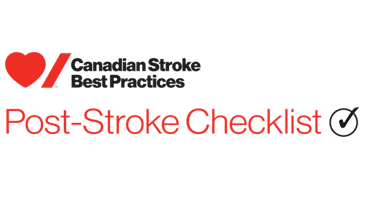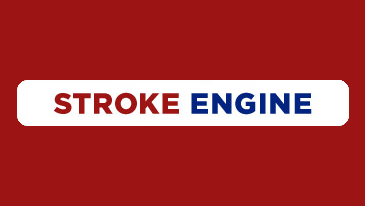- Definitions
- 1. Stroke Awareness, Recognition, and Response
- 2. Triage and Initial Diagnostic Evaluation of Transient Ischemic Attack and Non-Disabling Stroke
- 3. Emergency Medical Services Management of Acute Stroke Patients
- 4. Emergency Department Evaluation and Management of Patients with Acute Stroke and TIA
- 5. Acute Ischemic Stroke Treatment
- 6. Acute Antithrombotic Therapy
- 7. Early Management of Patients Considered for Hemicraniectomy
- 8. Acute Stroke Unit Care
- 9. Inpatient Prevention and Management of Complications following Stroke
- 10. Advanced Care Planning
- 11. Palliative and End of Life Care
Recommendations and/or Clinical Considerations
7.1 Patient Selection
- For patients aged 18 – 60 years old, hemicraniectomy should be considered as a life-saving measure for patients in the early stages of extensive (malignant) middle cerebral artery (MCA) territory ischemic stroke (defined as infarction size >50% MCA territory on visual inspection, or an ischemic lesion volume >150 cm3 and concomitant clinical features) if patients or their substitute decision-makers are willing to accept a significant risk of living with a degree of disability that may leave them dependent on others for their activities of daily living. years [Strong recommendation; High quality of evidence].
- Hemicraniectomy could also be considered for patients aged 60 – 80 years [Conditional recommendation; Moderate quality of evidence].
- Posterior fossa decompression should be considered early in patients with significant cerebellar stroke with evidence of mass effect and/or hydrocephalus [Strong recommendation; Low quality of evidence].
- Patients at risk for malignant edema should have a consultation with a stroke specialist and neurosurgeon [Strong recommendation; Low quality of evidence].
- If these services are not available on-site, patients should be considered for expedited transfer to a centre where advanced stroke care and neurosurgical services are available [Strong recommendation; Low quality of evidence].
7.2 Initial Clinical Evaluation
- Urgent decisions regarding decompressive craniectomy should be undertaken based on discussions with patient, family members, and substitute decision-maker regarding a potential decompressive craniectomy [Strong recommendation; Low quality of evidence].
- Patients with severe stroke due to large vessel occlusions may be at higher risk of developing malignant edema. In these patients, early discussions should be considered [Conditional recommendation; Low quality of evidence].
- Key issues to be discussed with the patient, family members, and substitute decision-makers include stroke diagnosis and prognosis if untreated, the risks of surgery, the possible and likely outcomes following surgery including the odds of living with severe disability, and the patient’s previously expressed wishes concerning treatment in the event of catastrophic illness [Strong recommendation; Low quality of evidence].
7.3 Considerations Prior to Hemicraniectomy Surgery
- Patients at risk of malignant edema should be monitored in an intensive care unit or neuro step-down unit [Strong recommendation; Low quality of evidence].
- Monitoring should include assessments of level of consciousness (e.g., Glasgow Coma Scale, Canadian Neurological Scale Score (CNS)), worsening symptom severity, and blood pressure at least hourly or more frequently if the patient’s condition requires it [Strong recommendation; Low quality of evidence].
- If changes in status occur, the stroke team and neurosurgeon should be notified immediately for re-evaluation of the patient [Strong recommendation; Low quality of evidence]. Changes in status include level of drowsiness/consciousness, change in CNS score by ≥1 point, or change in National Institutes of Health Stroke Scale (NIHSS) score by ≥4 points [Strong recommendation; Low quality of evidence].
- In patients selected for decompressive craniectomy, surgery should be performed within 48 hours from stroke onset, and ideally before clinical deterioration occurs [Strong recommendation; Moderate quality of evidence].
- Patients with suspected elevation in intracranial pressure may be managed according to institutional protocols (e.g., administration of hyperosmolar therapy, head of bed elevation) [Conditional recommendation; Low quality of evidence].
Section 7 Clinical Considerations
- Global disability and quality of life outcomes are similar regardless of whether the hemicraniectomy was for right or left sided MCA infarction.
- Whereas age alone is not a reason to forego hemicraniectomy, the DESTINY II trail reported that for 0% of patients over 60 years had mild or no disability (mRS of 0 – 2), and only 7% could function independently (mRS 0-3) after hemicraniectomy surgery.
The morbidity and mortality of patients with malignant hemispheric strokes is higher than other stroke subgroups. In selected cases, hemicraniectomy may significantly reduce mortality, with numbers needed to treat as low as 2 (Reinink H et al., JAMA Neurol 2021;78(2):208-216), and increase the probability of a reasonable outcome (mRS ≤3).
Consideration for hemicraniectomy must be individualized, with careful clinical consideration of patient selection. Decisions regarding hemicraniectomy involve several members of the interdisciplinary stroke team, including neurology, neurosurgery, intensive care, and nursing, through a collaborative and coordinated system of care.
To ensure people experiencing a stroke receive timely stroke assessments, interventions and management, interdisciplinary teams need to have the infrastructure and resources required. These may include the following components established at a systems level.
- Timely access to diagnostic services such as neuroimaging, with protocols for prioritizing potential patients with stroke.
- Timely access to specialized stroke care (i.e., a neuro-intensive care unit) and neurosurgical specialists for consultation and patient management, including rapid referral process if neurosurgical services are not available within the initial treating hospital.
- Access to organized stroke care, ideally stroke units with a critical mass of trained staff and an interdisciplinary stroke team.
- Education for emergency department and hospital staff on the characteristics and urgency for management of patients with severe stroke.
System Indicators:
- Risk-adjusted mortality rates for patients with stroke who undergo craniectomy (in-hospital, 30-day, and one year). (Also PROM)
Process Indicators:
- Time from arrival to hospital to start of hemicraniectomy procedure.
- Percentage of hemicraniectomy patients who experience intraoperative complications.
Patient-oriented outcome and experience indicators:
- Distribution of functional ability measured by standardized functional outcome tools at time of discharge from hospital and over time in the community (e.g., 90 days, 1 year).
- Quality of life rating for people who have undergone craniectomy following an acute stroke, using validated quality of life measures.
Measurement Notes
- Mortality rates should be risk-adjusted for age, sex, stroke severity, and comorbidities.
- Time interval measurements should start from symptom onset of known or from triage time in the emergency department as appropriate.
Resources and tools listed below that are external to Heart & Stroke and the Canadian Stroke Best Practice Recommendations may be useful resources for stroke care. However, their inclusion is not an actual or implied endorsement by the Canadian Stroke Best Practices writing group. The reader is encouraged to review these resources and tools critically and implement them into practice at their discretion.
Healthcare Provider Information
- Canadian Stroke Best Practice Recommendations Acute Stroke Management Module Appendix 3, Table 4: Screening and Assessment Tools for Acute Stroke Severity
- Canadian Stroke Best Practices Table 2A: Recommended Laboratory Investigations for Acute Stroke and Transient Ischemic Attack
- The Ontario Acute Stroke Best Practice Coordinators and the Ontario Regional Education Group in collaboration with Heart & Stroke: Key Changes to the 2022 Acute Stroke Management Canadian Stroke Best Practice Recommendations
Information for people with lived experience of stroke, including family, friends and caregivers
Evidence Table and Reference List
Sex and Gender Considerations Reference List
The benefit of decompressive hemicraniectomy compared with standard medical treatment, early following malignant MCA infarction in patients <60 years has been evaluated in three major RCTs, all of which had comparable inclusion criteria and primary outcome measures (DESTINY 1, HAMLET, and DECIMAL). In the first DESTINY trial (Juttler et al., 2007), which randomized 32 patients to receive either surgical plus medical treatment or conservative medical treatment only, there was a trend toward more favourable outcome (mRS 0-3) among patients in the surgical arm at 6 months (47% vs. 27%, (p=0.23; OR=2.44, 95% CI 0.55 to 10.83). Thirty-day survival was significantly higher among patients in the surgical arm (88% vs. 47%, OR=6.4, 95% CI 1.35 to 29.2). In the HAMLET trial (Hofmeijer et al., 2009), while there were no differences between groups in the proportion of patients who had experienced either a good (mRS 0-1) or poor (mRS 4-6) outcome at 1 year, surgery was associated with a 38% absolute risk reduction (95% CI 15 to 60, p=0.002) in one-year mortality. Patients who received decompressive hemicraniectomy had significantly lower mean physical summary scores on the SF-36 Quality of Life scale, compared with those treated with medical care only (29 vs. 36; mean difference = −8, 95% CI -14 to -1, p = 0.02). No significant differences were found between the two treatment groups with respect to the mental summary score of the SF-36 score, mood, or the proportion of patients or carers dissatisfied with treatment. At 3 years follow-up (Geurts et al., 2013), a significantly lower percentage of patients in the surgical group had died (26% vs. 63%, p=0.002) In the DECIMAL trial (Vahedi et al. 2007b), while there was no difference in the number of patients with mRS scores of 0-3 between groups at 6 months, a significantly higher proportion of surgical patients had mRS scores of 0-4 and there was also a survival advantage among patients in the surgical arm. The results from all three trials were pooled in a Cochrane review (Cruz-Flores et al., 2012), which reported that decompressive hemicraniectomy was associated with a significantly reduced risk of death at the end of follow-up (OR = 0.19, 95% CI 0.09 to 0.37) and the risk of death or severe disability (mRS > 4) at 12 months (OR = 0.26, 95% CI 0.13 to 0.51). Surgery was also associated with a non-significant trend towards increased survival with severe disability (mRS of 4 or 5; OR = 2.45, 95% CI 0.92 to 6.55). No significant between group differences were found for the combined outcome of death or moderate disability (mRS 4-6) at the end of follow-up (OR = 0.56, 95% CI 0.27 to 1.15). In a more recent systematic review, which included the results from 7 trials, including DESTINY, DESTINY II, DECIMAL and HAMLET (Reinink et al., 2021), similar findings were reported. The odds of a favourable outcome (mRS 0-3) at one year were significantly higher in the surgical group (adjusted OR=2.95, 95% CI 1.55-5.60) and the odds of death of death at one year were significantly lower (adjusted OR=0.16; 95% CI, 0.10-0.24).
The upper age limit for decompressive hemicraniectomy in malignant MCA infarct has been a focus of debate, given that the evidence is conflicting. Using data from 276 patients obtained from 17 case series, McKenna et al. (2012) reported that patients ≥60 years of age who underwent surgery had a higher mortality rate and poorer outcome compared with younger patients. In the DECIMAL trial's surgical group, younger age correlated with better outcomes at 6 months (r = 0.64, p < 0.01) (Vahedi et al., 2007b). A retrospective study investigating decompressive hemicraniectomy in older adults compared the outcomes of individuals aged between 61 and 70 years and those >70 years of age (Inamasu et al., 2013). The mortality rate was significantly higher among those in the older cohort (60% vs. 0%, p = 0.01). However, there is also evidence suggesting that older patients also benefit from surgery. Zhao et al. (2012) randomized 47 patients aged 18 to 80 years, 29 of whom were >60 years. Decompressive hemicraniectomy within 48 hours of stroke onset was associated with a significant overall reduction in mortality at both 6 (12.5% vs. 60.9 %, p = 0.001) and 12-month follow-up (16.7% vs. 69.6 %, p < 0.001). In the subgroup of older patients, 61% fewer patients in the surgical arm had an unfavourable outcome (mRS 5–6) at 6 months (31.2% vs. 92.3%) with similar results reported at one year. Authors from the HAMLET trial reported that there was a trend towards greater benefit of surgery in patients between the ages of 51 and 60 compared with patients ≤50 years of age (Hofmeijer et al., 2009). In the DESTINY II trial (Juttler et al., 2014), 112 patients ≥61 years admitted with unilateral MCA infarction were randomized to receive conservative treatment or early surgical intervention. A significantly higher proportion of patients in the surgical group were alive and living without severe disability (mRS 0 – 4) at 6 months (38% vs.18%, OR=2.91, 95% CI 1.06-7.49, p=0.04). Although no patients in either the surgical or medical care groups had good outcome (mRS score of 0-2) at 6 or 12 months, a significantly higher percentage of patients in the surgical group had mRS scores of 3-4 (38% vs. 16%) and a significantly lower percentage had mRS scores of 5-6 (62% vs. 84%).
Timing of surgical intervention is also an important consideration when deciding whether to perform decompressive hemicraniectomy. In the HAMLET trial there was a significant reduction in both mortality and poor outcome when patients were randomized to surgery within 48 hours of stroke onset, with no significant benefit when patients received surgery within 96 hours (Hofmeijer et al., 2009). However, in a pooled analysis using the subgroup results from the DECIMAL, DESTNY I and HAMLET trials examining the outcomes of patients treated within 24 hours vs. >24 hours following stroke onset, no differences in outcome were reported (Vahedi et al., 2007a). Taken together, these findings suggest that the appropriate time interval to perform decompressive hemicraniectomy may be within 48 hours; however, further research is needed to determine if earlier treatment (e.g., within 24 hours) is associated with better outcomes.
Sex and Gender Considerations
The mean percentage of men enrolled in the trials reviewed was ≥50%, ranging from 50% (DESTINY 2) to 72% (Zhao et al., 2012), except in the DESTINY and DECIMAL trials, where men represented 47% of participants. Sex was not explored as a potential effect modifier in any of the hemicraniectomy trials.





